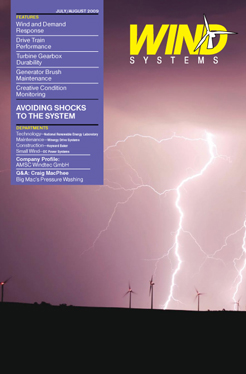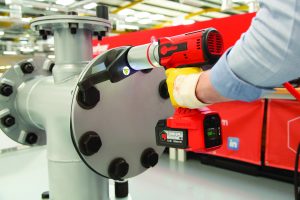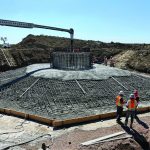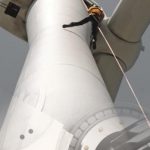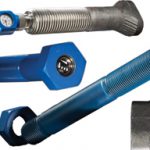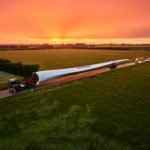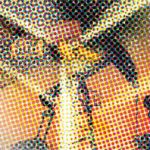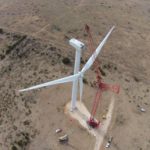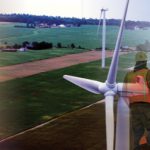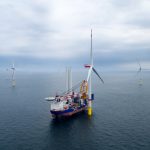The synergy was apparent from the start. American Superconductor (AMSC) had been selling electrical systems and core components such as its PowerModule power converters for wind turbines for many years. One of its customers, Windtec—which is based in Austria—had begun incorporating these systems into the wind turbines it designs. Windtec was an engineering firm that provided technology and licenses to third parties who wanted to manufacture their own wind turbines. Orders to Windtec licensees began to increase, soon attracting the notice of AMSC’s executives. “The result is that American Superconductor acquired Windtec in 2007,” according to Jason Fredette, director of investor & media relations, “and the wholly-owned subsidiary was renamed as AMSC Windtec GmbH.”
Since 1995 Windtec has been involved in developing complete electrical and mechanical designs for wind turbine applications, but the resources provided by AMSC have allowed it to accelerate its growth, in particular with the supply of wind turbine converters and electrical systems. “Windtec has a really unique set of offerings,” he says. “They design wind turbines from the ground up, of course, but they can also step in and help a company interested in building their own turbines to scale up for operation.
Windtec will license its turbine designs to the company, help design its manufacturing line, and then identify suppliers for all the key components they’ll need, including gearboxes, blades, towers, etc. They will help the company localize these supply sources to keep costs down, and also assist in getting reference turbines up and running and certified.”
Fredette describes the perfect candidate for this service as an established heavy industry business with a strong balance sheet that knows how to build large pieces of equipment but lacks the specific expertise required to enter the wind industry. “These companies have an option,” he says. “They can build their wind business from scratch, searching for engineers to create proprietary designs for them and teams to assemble them, which takes quite a bit of time, or they can work with Windtec, license its designs, and literally begin production in about a year.”
Proof of this model’s success is easy to quantify, especially in light of the huge companies that are currently involved. Since 1996 Fuhrländer, of Germany, and China’s Sinovel have collaborated with Windtec, with the former manufacturing 600 kW and 1.5 MW turbines while the latter currently produces 1.5 and 3 MW turbines, with a 5 MW model to be launched in the coming years. Among the remaining 12 Windtec customers under contract are Wikov of the Czech Republic, Korea’s Doosan Heavy Industries and Hyundai Heavy Industries, India’s Inox and Ghodawat Energy, Turkey’s Model Enerji, TECO of Taiwan, and AAER Wind Energy, which is located in Canada. All are focusing on manufacturing turbines between 1.5 MW and 3 MW in size, and all are scheduled to commence production by the end of 2011. “Windtec had three of these customers when it joined us,” Fredette says, “and the rest of them have come onboard since that time.”
AMSC in its entirety is heavily involved in R&D, focusing on a number of different areas pertaining to wind-power generation. As more output is required from wind turbines, it will become increasingly important to discover ways of delivering more power without adding to the weight of structural turbine components, such as the generator. As a manufacturer of superconductor wire, AMSC has developed an especially power-dense material that will allow generators to produce much more power—sometimes doubling its output—without adding significant weight. In partnership with TECO-Westinghouse—manufacturer of motors and generators for the wind market—it is helping design superconductor-enhanced generators. Begun in 2007, it is partially funded by an award from the National Institute of Science and Technology’s Advanced Technology Program. Another research initiative focuses on designs that have been developed by AMSC Windtec for a 10 MW wind turbine, with tests currently being conducted into its economic feasibility. This project, known as a Cooperative Research and Development Agreement (CRADA), involves the U.S. Department of Energy’s National Renewable Energy Laboratory (NREL) and its National Wind Technology Center.
“Our objective is to have these 10 MW turbines available to the market by the time offshore wind really starts taking off,” according to Fredette. “We’re thinking that market will be growing nicely by the middle of the next decade, and that’s when we’d like to have this technology available.”
Separate from its Windtec subsidiary, American Superconductor already offers a variety of innovative technologies for the wind industry, including its D-VAR system, which is comprised of an integrated array of PowerModule power converters, regulating and stabilizing voltage levels by injecting dynamic reactive power, or VARs, into the power grid at precise locations where voltage problems can occur.
Windtec’s roster of customers is fairly full, and there are only so many licenses available, so it must be very selective in selecting the companies it chooses to work with. Still, it is always looking for new opportunities—in the United States, in particular. “But you’ve got to be very serious about this and willing to act aggressively,” Fredette says. “You don’t approach the wind-turbine manufacturing market tepidly.”
For more information:
Call +43 (0) 463 444604-0, e-mail sales@amsc-windtec.com, or go online to
www.amsc-windtec.com.



















